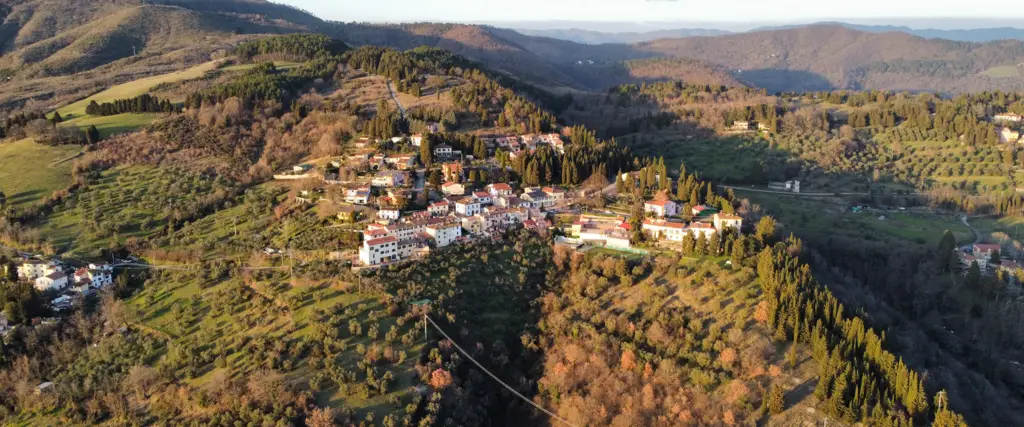
Acone
It is the smallest hamlet of the Municipality of Pontassieve and the farthest away from the main town.
The origin of the name Acone is not certain, but according to some it would date back to the name of a Roman settler (Aconius), while according to other sources it could refer to the Latin term "acona", which denoted a whetstone, highlighting the stony nature of the soil.
Dating back to the 6th century B.C. are the evidences of the first settlements in these places, which are found along the Roman road connecting Monte Giovi with Fiesole and during the Second Punic War, in 271 B.C., the area upon which the first rural settlement would be built, was crossed by Hannibal's army.
Between the 9th and 10th century, Acone was part of the feud of the Guidi di Romagna Counts, who chose to live in the Castel d’Acone. The first rural villages began to develop and it was the start – where today the cemetery of the hamlet lies – of the construction of the Sant’Eustachio in Jerusalem church which, at the end of the 10th century, was rebuilt in its current location as the Sant’Eustachio in Acone parish church.
This was then followed by the building of the Santa Maria in Acone church and the San Martino a Petroio one, and the birth of what is known as the so-called Pieviere di Acone, that is one of the six districts ("plebati" or "pievieri") which refer to the corresponding parish churches, in which the Municipality of Pontassieve was divided around the 13th century.
In the 13th century, Acone saw the birth of the noble de’ Cerchi family who, before moving to Florence, first resided in the Castel d’Acone, to the extent that the small hamlet and the Cerchi family are mentioned in Dante's Divine Comedy, in the 16th canto of Paradise:
«The Conti were possest
of Montemurlo still: the Cerchi still
were in Acone's parish: nor had haply
from Valdigreve passed the Buondelmonti»
(Canto XVI, 63-66)
In 1308 Acone joins the League of populations of Diacceto, Monteloro and Rignano, later becoming part of the podestà's seat of Pontassieve in 1375. In the 14th century the territory where Acone lies was acquired by the Florentine Medici family, whose presence is still attested by a plaque placed at the entrance of the parish church.
Between the 16th and 17th century, in the grand ducal age, Acone was expanded in its current geographical position. After a short period of Napoleonic occupation the 19th century sees Acone reach its maximum development as a rural hamlet. In 1840 the village had 954 residents.
During Fascism, Acone and its countryside became landmarks of the Resistance. After September 8 1943 in the woods of Acone, on Mount Giovi, important partisan brigades are formed, becoming key players in the Liberation of Florence and the history of Italian Resistance: the Gruppo Pontassieve, the Faliero Pucci and the Spartaco Lavagnini ones, and again the Caiani brigade and the Lanciotto Ballerini one.
But above all, the whole community of the small hamlet offers voluntarily and wholeheartedly its own collaboration with the partisan brigades, effectively becoming one of the centres of the Tuscan Resistance; an example of this contribution is the figure of Don Egidio Brogi, parish priest of Santa Maria who, after the armistice in 1943, hosts more than three hundred persons including partisans, former prisoners and displaced persons of the area.
Comune di Pontassieve